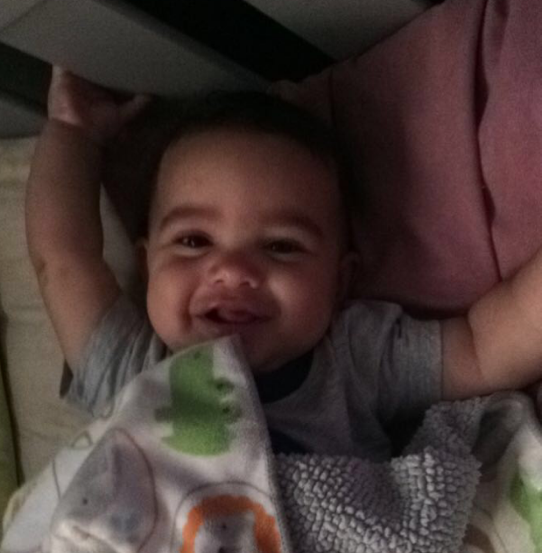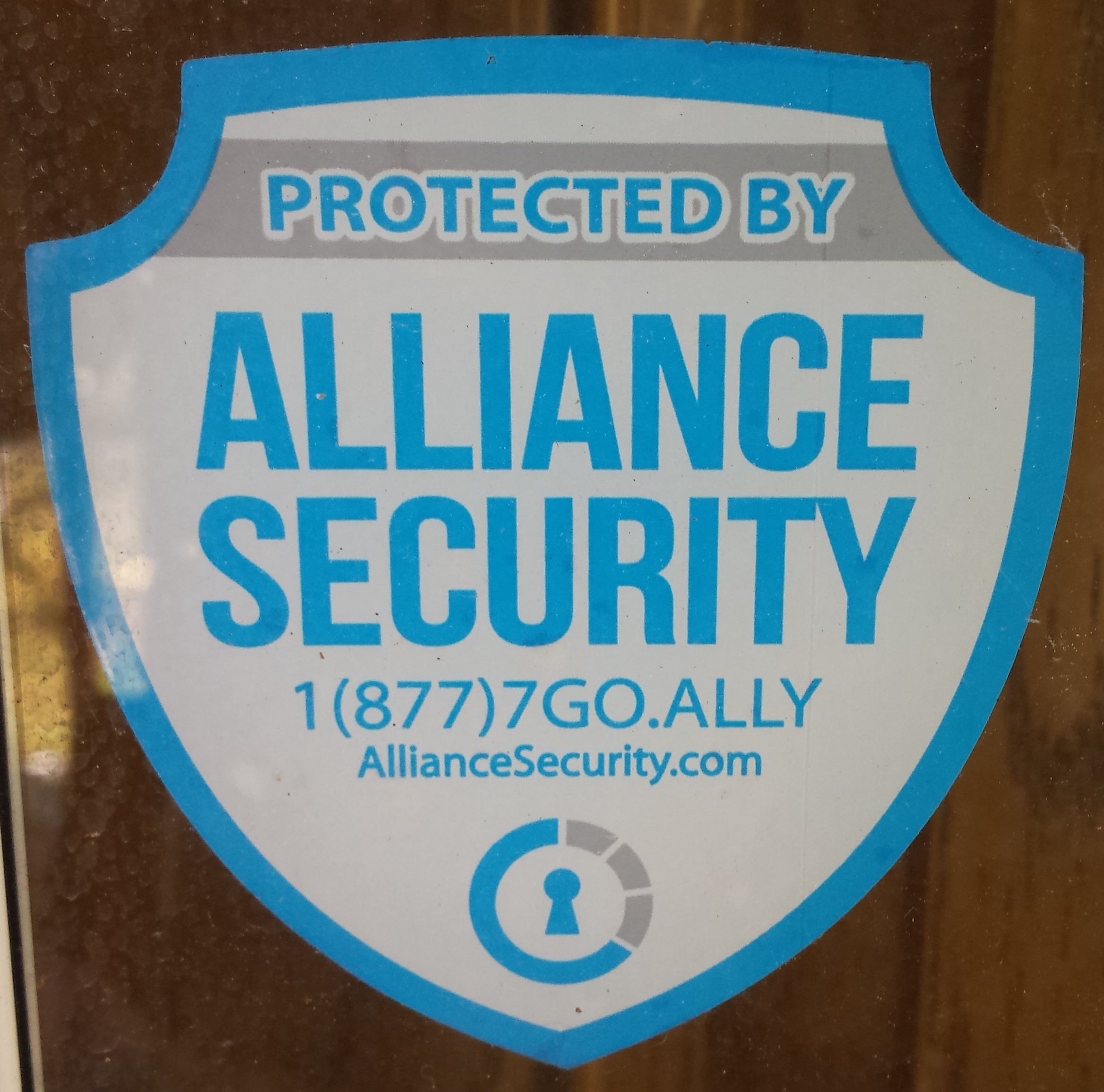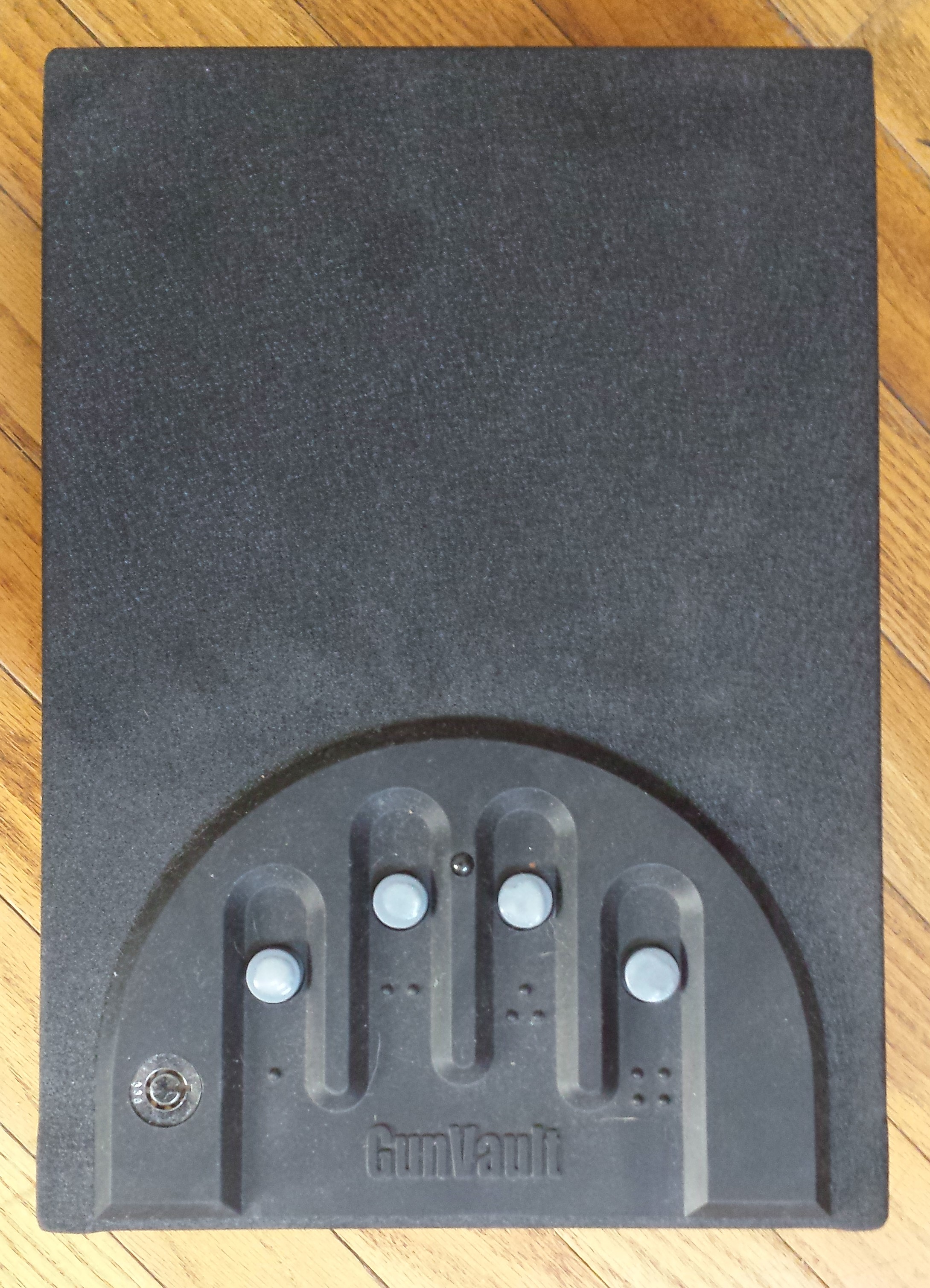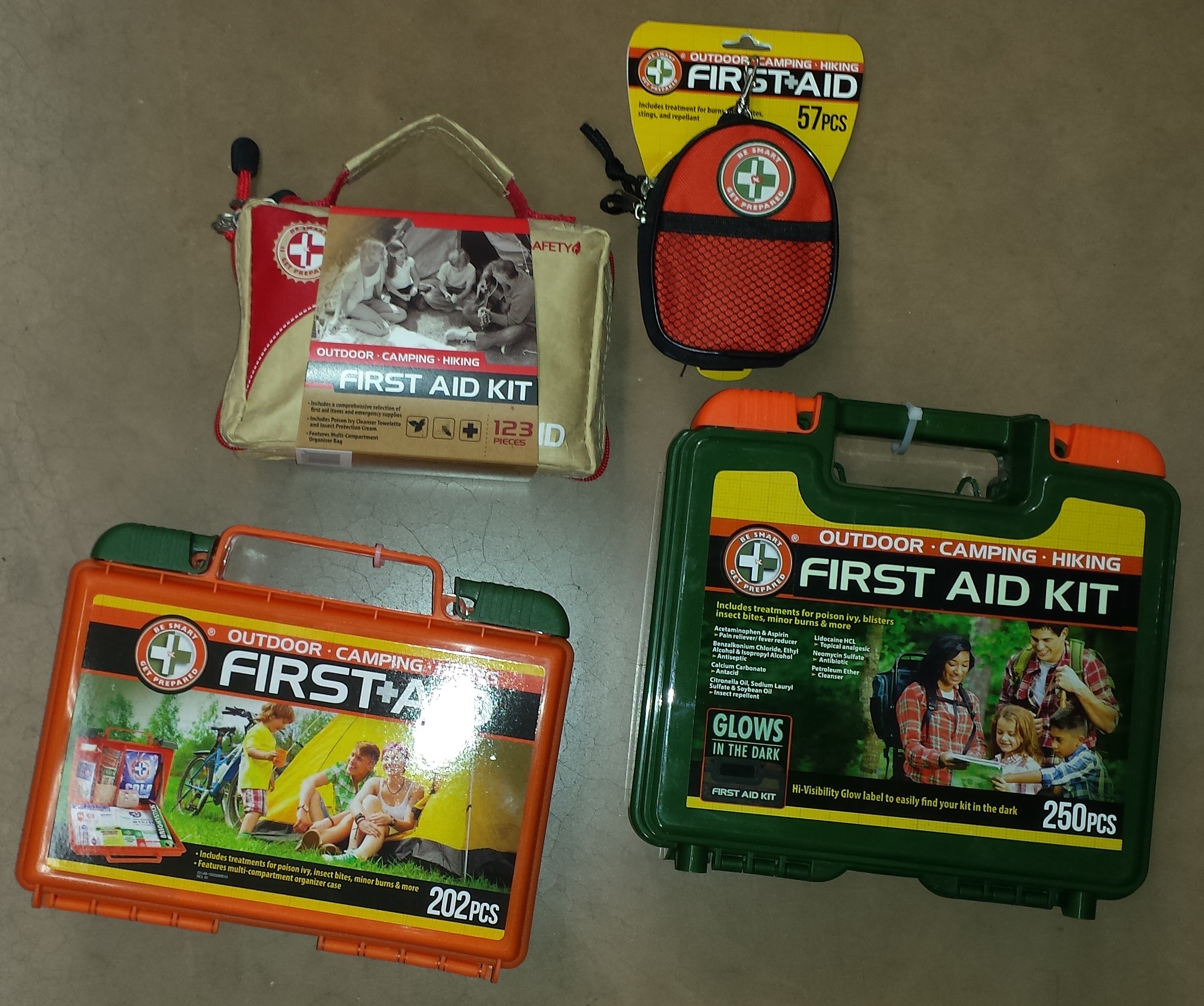
An infant feels safe wrapped in a blanket, even though we as adults know it offers little to no protection. Photo: author
All too often, people take what I refer to as the “baby blanket approach” to their personal safety and defense. I call it this because a baby in a blanket feels safe and secure, but as adults we know the blanket offers no real protection other than warmth. Even toddlers cling to this idea and need a certain blanket to sleep with to ward off bad dreams and feel safe. The problem is that we too, as adults, like this feeling and are susceptible to products and ideas that make us feel safe, but in reality do nothing to protect us. I want to address some of those and take a realistic look at the downfalls.
Alarm Systems
Alarm systems are great at deterring criminals, and statistically your home is less likely to be burglarized if you have alarm company logos and signs displayed. Also the average loss from a burglary is significantly lower in a home with an alarm system versus one that does not have one. Criminals do not want to be in a home where they believe the police are being dispatched to or a loud siren may alert a nosy neighbor. This is good for protecting your property, but it does nothing to protect yourself or your family.
When I was in my early 20s, I worked in mental health directly with clients. One night a client became very agitated. He picked up a chair and hit me in the leg with it. I was not injured (it did not feel good) and the client walked away.

This window decal advertising that an alarm system is in use may help deter a burglar but does nothing to seriously protect you from a violent attack. Photo: author
Instead of the normal protocol, the phone rang a few minutes after the incident. It was the local police department checking to be sure the panic alarm was not a false alarm. This placed myself and the other staff in more danger as we now had to try to discreetly tell the dispatcher that yes, we did need them there.
Luckily in this case, the client stopped his actions, law enforcement arrived several minutes later, and he was taken into custody. But what would have happened if he had not stopped? In the 10 or so minutes from the time the button was pushed to the arrival of law enforcement, a lot could have occurred. This was not a secure location and there was potential for weapons or improvised weapons. The panic button and alarm did nothing to actually protect us.
Alarms may generate a response, but in many cases the alarm company tries to call the homeowner prior to dispatching. This delays an already slow response even further. During this time, you could be in a fight for your life. And whether it is you or the alarm company that calls, police will not arrive instantly.
I had a discussion with an alarm company salesman once when a relative was buying an alarm system. She had been having trouble with an ex-boyfriend and wanted to be able to protect herself. The salesman asked me what my issue with the system was and I explained I was familiar with response times to alarm calls and did not feel the alarm system did anything to actually “protect” her. The salesman said his alarm had gone off twice in the past year and he had “great response times.” I asked him for approximate times and he said confidently, “The first was 15 minutes and the second was 18 minutes.”
I asked if someone were to kick in the door if that was the point the alarm would go off or if there would be a delay. Of course there would be a delay because the sensor cannot tell the difference between a door being politely opened and it being violently kicked in. On most systems, this delay is 30 to 60 seconds.
I then told him I was the bad guy and pointed my finger at him as if it were a gun. I said bang a couple times, then asked, “How much time do I have left with your ‘great response times’?”
The fact is that, when a person is there to harm you, an alarm does nothing to protect your well-being. It only means that someone will find you sooner and therefore law enforcement gets an early start on their investigation to find the person who harmed you.

Put serious thought into how and where your firearm is stored relative to your likely incident. Photo: author
“I Have a Gun To Protect My Family”
When people learn I am a firearms instructor, they often tell me they purchased a firearm for home protection. I ask some questions, starting with the usual ones like, “What firearm did you decide to buy?”
Believe it or not, this question stumps a lot of people. Their brother, cousin, friend, or whoever else helped them pick it out and they have no idea what they purchased. I get a lot of responses such as, “I don’t know the name of it, but it’s black.” Some try to get more detailed, with disclosures such as, “It has the clip things” or “I think it is a 9 something.”
When I ask questions about training with the firearm, I am often told, “I shot a magazine through it and it worked great” or that they went to a friend’s house and they were able to hit the bullseye a couple times.
This lack of training is in my opinion negligent. A firearm comes with a lot of responsibility and a personal training requirement. Anyone who has a firearm in their home should know how to use it, what type of ammunition it takes, how to load and unload without assistance, and have formalized training that applies to how they are going to use it.
I next ask where the firearm is kept. I previously wrote an article on securing firearms and, although that is important, what I’m asking here is, “How is the gun going to get into the fight?”
Nearly 100% of the time, the person keeps the firearm in their bedroom. This alone shows how much the firearm is merely a baby blanket to make the person feel safe. I ask the person to envision a scenario in which they are sitting in their living room and they hear someone coming through their door, and ask if they can get past this home invader to reach their firearm. Most people admit they would have to fight through the bad guy to retrieve their firearm.
I also encourage these people to watch the video commonly referred to as the “New Jersey Nanny Cam,” in which a woman is walking toward her front door when a man comes through the door and begins violently beating her. Her seven-year-old daughter is sitting on the couch watching this all occur and an infant is upstairs. The home invader goes upstairs a couple of times and comes back down to beat the woman more before throwing her into what appears to be the basement.
Assuming a standard house layout, we can surmise that her bedroom is upstairs. I ask people to think about whether the woman would have been able to get to a firearm kept in the bedroom, and if the intruder would have been able to retrieve a firearm kept there.
“I’ve Got My CCW”
This is another statement I hear when people find out I am an instructor. Often I ask what other training the person has had since obtaining their license. Commonly this is met with a blank stare. Many people have had their license for years and took a basic pistol course that taught target-shooting concepts. Sometimes when I talk about defensive firearms concepts, they ask questions about training, but most of the time, they rationalize why they don’t need to train. Many tell me how well they did in the target-shooting course or that they “just don’t have time.” I always encourage these people to seek training, whether from me or another qualified individual, and I attempt to convey the importance of quality training.
Another response I get is, “I was in the military.” While I mean no disrespect to any veteran, the fact is that military and civilian training are completely different contexts. Military operations are more offensive in nature than a civilian encounter. Even defensive operations are completely different than that of civilian defense. The other point is that the majority of our military gets little to no training with handguns, since the majority of the military does not carry a handgun, so this would be a waste of resources. Many veterans have told me just how little they even trained with a rifle. Unless they were in a combat or military police MOS, they did not need a serious degree of weapons training.
Some people say they do not even carry their firearm, which is admitting they have given up on the idea of protecting themselves. Many people say that after their class, they still did not feel comfortable carrying the firearm. Again this comes down to a lack of training and knowledge. But I do not belittle these people, and quite honestly respect their position. After all, they are admitting they have a lack of knowledge and training and that they should receive more before they take on this major responsibility.
The importance of training cannot be stated enough. Training with your firearm can mean the difference between life and death in a worst-case scenario. Just as important is training in context for your probable scenario. If you have trained for tactical or combat operations, that’s great, but unless your likely scenario is hostage rescue or combat operations, it is not really relevant. Get quality training aimed at civilian personal defense or law enforcement patrol operations, if that is your role. A traffic stop or civilian lethal-force encounter is more different than a hostage rescue than it is similar.
Medical Gear
This is an area in which, although we are getting better, we as a community struggle. Just as we are solely responsible for protecting ourselves from the bad guys, we are also solely responsible for keeping ourselves alive until further medical attention can be obtained. A surprising number of people have had no medical training, let alone basic field trauma training. Knowing CPR and Basic First Aid can mean the difference between life and death in many situations. I have had to use my basic medical training much more often than I have ever (or hopefully ever will) needed to use my firearms training. I can point to several incidents where basic medical knowledge helped me to help others.
Though again, having only the basics can give you that false safe feeling like a baby blanket.
I recently donated some trauma kits and tourniquets to a local police department. The kits included QuikClot, gauze, and other items needed for basic field trauma. A few weeks later, an officer thanked me for the donation and I asked him if he knew how to use the materials to treat a gunshot wound or stab wound to the shoulder or extremity. He said he’d put the QuikClot on top of the wound, and was shocked when I described how to pack and wrap a wound and gave him a very brief field trauma lesson.
Like your defensive tools, know how to use your medical gear. Just having it may make you feel safer, but it does nothing to help you survive a worst-case scenario. Get training in the basics of CPR, First Aid, and Field Trauma. You never know when you may need them.

These first aid kits sold at big box stores are nearly worthless in the case of an actual medical emergency. Photo: author
I checked the label with the contents and, sure enough, the kit did not come with even one roll. This basic item should be in any first aid kit. Looking through the kit, I realized just how useless it was. It contained items for minor bumps and bruises, a cold pack, and even large gauze pads, but no way of wrapping them to secure them. This kit was nothing more than a baby blanket that made me feel good having it stored in the bathroom closet. Had a real emergency occurred and it was the only thing I had, I would have been left to improvise rather than using this worthless kit.
I recently looked at a few different first aid kits in the sporting goods section of a local big box store. The majority of these kits had items for bee stings, insect bites, headaches, etc but nothing to treat moderate to severe bleeding. For a moment I thought about context and that these were kits for hiking or camping, where insect bites or a headache could be common. Then I thought about the probability of a twisted ankle or knee injury that would need to be wrapped for the long walk back to civilization. None of these kits had anything for such an injury. They were nothing more than a baby blanket/feel good purchase.
Conclusion
We can all be tempted to take the easy and simple path to protect ourselves, but when we do, we are giving ourselves a false sense of security. Training occasionally for both defensive and medical situations gives you a much better chance in a worst-case scenario. This training does not need to be very expensive and you may not dedicate your life to it, but you should gain some competency.
The gear you choose can also give you this false sense of security. Choose gear with your likely scenarios in mind. You may choose a firearm that is more suited to home defense than one that is concealable if that is your more probable defensive scenario. Plan how you would access this defensive tool rather than making its mere presence your plan. Choose medical gear based on your likely scenarios but have the basics of trauma in mind as well. Through training and proper gear selection, you can greatly increase your personal safety, rather than being like the baby snuggled in a blanket.

Good stuff as always, we must always stay on rtop and be prepared.
Love this article. (As a matter of fact, I first checked the responses to make sure I hadn't responded before.) The only thing that I want to comment on is how fitting the image is of a baby in his blanket. The knowledge of my small children and my wife snuggled in bed, depending on me was all the motivation I ever needed to get all the training I could to protect them.
This is so right on the mark. This is something we hear daily. Sharing with all my clients.
Remember good. If you must use your gun to defend yourself in any way. NEVER, NEVER talk to the police. Until you have a lawyer with you. Just give your name. And say. I was in fear for my life. I want a lawyer. And the RIGHT kind of lawyer. Know your rights & use them.
Very good advice thanks for sharing
With regards to NOT carrying your firearm.... first, point taken on no training and no knowledge that's a motivation killer right off the bat. Second, there are two types of carry, open and concealed and with the nature of an unpredictable public, open carry is invitation for trouble because there is some clown out there that wants to make a spectacle of himself/herself. Because of those people, one should be involved in "situational awareness". You cannot be plugged into your iPhone listening to tunes and think the world is wonderful. You have to know who is around you at all times. Thirdly, the legal complications that follow you if you use your firearm, so one needs to have a plan to deal with the criminal and civil issues that appear as well. In conclusion, owning a firearm is much like buying a car. You need to learn how to use it safely, take care of it, keep it clean, have insurance if something goes wrong.
I like, agree with, and appreciate this article. I am a trained first aid and CPR instructor and this is the first I have heard of 'trauma first aid'. Now I need to get a few new kits with the supplies; and some more training. Thank you
Very good info. I do however somewhat disagree with your opinions of alarms. I recently purchased a home with no alarm. You are correct, it "had" a delay feature. I had the service tech out and pointedly explained that I wanted no delay, If I get up and set the alarm off and spill coffee on myself that was my own fault. I told him to either find a way to work around the delay or remove it. Well he found a way.. LOL. Point being, I like the alarm because it is a deterrent and I want to know instantly when that door is kicked in. I am a Arkansas State Police Concealed carry instructor and an NRA Instructor. I always have a firearm very close to me in my home. I explain in class, security comes in layers... Awareness, light's outside, a loud dog if possible, alarm systems and as a last resort firearms. Most importantly a plan, and lot's and lot's of practice/ training. I have gotten the same answers and blank stares you have in class. Thanks!
[…] post The Baby Blanket Approach to Personal Safety appeared first on Personal Defense […]
Spot on, as usual. I only wish every gun owner would take the importance of training as seriously as you do. Thank for another great article.